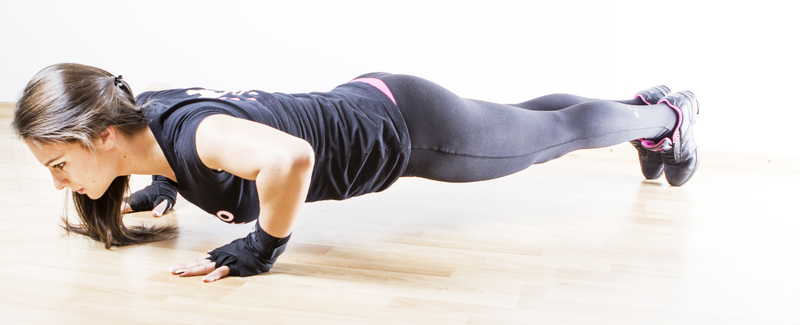7 Most Effective (and Efficient) Compound Lifts

How would you like to boost your strength and burn more calories, all while enhancing your fitness and performance? If this is on your workout bucket list, then you need to include these compound lifts in your workout routine.
What Is a Compound Exercise?
When working your muscles, you can either focus on specific muscle groups or you can perform what are called “compound exercises.” Compound exercises recruit multiple muscles (and joints) to perform movements, whereas more specific (isolation) exercises focus on working just one muscle group (and joint) at a time. (However, keep in mind that everything in your body is connected, and while you may hone in on working one muscle, undoubtedly, other muscles may play supporting roles in the lifts.)
Compound exercises tend to replicate functional movements that your body does on a day-to-day basis. For example, the way your body progresses through movements as you squat down to pick up something from the floor would be replicated in a compound squat lift.
What Are the Benefits of Compound Lifts?
Using compound lifts to optimize your workouts can help you in myriad ways. Here are a few examples:
Improve your workout efficiency—doing compound lifts helps you get the most health benefits in the least amount of time. By combining your movements and using the bigger muscle groups, you’ll not only finish your workouts faster, but you’ll also be able to work your entire body with fewer exercises.
Burn more calories—because you’re using large muscle groups and multiple muscles at the same time, your body will require a lot more calories than if you were working one muscle group at a time. That extra caloric need can add up to big calorie burns with each workout, and that can translate to more fat loss.
Cardiovascular endurance—since you’re working large muscles as well as several muscle groups simultaneously, your heart rate will increase during the movements in a manner similar to how it would if you were running or biking. By including compound lifts, you’ll greatly improve your cardiovascular fitness without doing any extra cardio.
Improve balance and coordination—compound lifts can also train your muscles to play nicely with each other. When your muscles work together to perform a lift, coordination improves. Since compound lifts involve multi-joint movements, they force your muscles and joints to move through different planes while focusing on control, intramuscular coordination, balance, and efficiency.
Gain muscle and strength—last but certainly not least, doing compound lifts allows you to lift more weight than you’d normally be able to lift. And lifting more, over time, will help you get stronger and put on valuable muscle mass.
What Are Some Examples of Effective, Efficient Compound Lifts?
You are probably already doing some of these exercises in the gym but just didn’t know you were doing compound movements. These are just a few examples, and there are a lot of other compound lifts you can try.
Deadlift—this is a fantastic movement that engages most of your muscles and burns a lot of calories. There are many different variations on deadlifts, so find some that you like or try them all.
- Muscles worked: glutes, hamstrings, upper and lower back, erectors, core, arms, and grip

Squat—this is one of the best and most efficient compound lifts you can do. A squat will work almost your entire body as it requires you to squat down, lift the bar or dumbbells, engage your core (abs and back), and fully use your leg muscles.
- Muscles worked: quads, hamstrings, glutes, core, arms, and back

Shoulder Overhead Press—this exercise works most of the muscles in your upper body and is a great way to build shape and strength.
- Muscles worked: chest, front, side and rear delts, core, and triceps

Pull-ups or Pulldowns—these exercises can be done with a number of different grip positions. Note: If your palms face more forward, then your focus will be mainly on the back muscles, and if your palms face toward you, you’ll be working more on your biceps and chest muscles.
- Muscles worked: back, biceps, core, rear delts, chest, and grip

Dips—these are usually done on a machine and allow you to lift and lower your body between two bars. If you’re not strong enough to do a dip without help, many gyms offer an “assisted” dip and pull-up machine that lets you rest your knees on a platform to help you perform the movement.
- Muscles worked: chest, shoulders, tris, core, and mid back

Pushup—as with pull-ups, this is a great exercise that will work your entire upper body. If you’re not strong enough for a full pushup, you can start on your knees until you build up the strength or try other pushup variations. Also, pushups can be done anywhere and without equipment, making them both efficient and convenient.
- Muscles worked: chest, tris, shoulders, and core

Lunges—these will work your entire leg as well as your glutes. You can do these with dumbbells or a barbell, step up onto a platform, or stay level with the ground. These will help build strength and give your legs shape.
- Muscles worked: quads, hamstrings, glutes, core, arms, lower back

Doing compound lifts is a great idea, but remember to include the other facets of fitness as well (flexibility training, isolation movements, cardiovascular work for fat loss, etc.) to have a well-rounded and balanced program.





